Choosing between a TV stand and an entertainment center might seem simple, but this decision changes your entire room. It affects how you organize your space, where you store your belongings, and how your room looks and feels.
People often think these terms mean the same thing. They don't. A TV stand and an entertainment center are two different pieces of furniture with distinct purposes. Knowing what sets them apart helps you pick what actually works for your home.
This choice matters more than you might think. You're not just buying furniture. You're deciding how you'll live in this space every day. The right piece makes your room work better and creates the atmosphere you want for years to come.
What is a TV Stand?
A TV stand is a single piece of furniture designed primarily to support your television. It positions your TV at eye level when you're seated, making viewing comfortable and reducing neck strain.
The main purpose of a TV stand is simple: to hold your TV safely without taking up too much room. This space-saving approach is what defines a TV stand. It's built to be compact while still being strong enough to support your television's weight.
Key features of TV stands:
- Designed to support TVs at seated eye level
- Compact footprint that saves floor space
- Strong construction to handle the TV weight safely
- Limited storage for media devices and accessories
While older TV stands were just simple platforms, modern versions have evolved. Today's stands often include shelves or small cabinets for your cable box, gaming console, or streaming devices. Despite these additions, they maintain their space-saving design.

Pros and Cons of a TV Stand
Pros
- Saves space: Their compact design works perfectly in apartments or small rooms
- Budget-friendly: Costs much less than entertainment centers
- Quick assembly: Usually takes 30-60 minutes compared to hours for entertainment centers
- Easy to move: Many models include wheels or lightweight builds for easier repositioning
- Blends with decor: Simple design doesn't overwhelm your room's style
- Versatile use: Can be repurposed for other rooms later
- Better device ventilation: Open design helps electronics stay cool and prevents overheating
- Easy access for maintenance: Can quickly reach cables and connections when needed
Cons
- Limited storage: Not enough room for multiple devices or large collections
- Size restrictions: Can't safely support very large or heavy TVs
- Additional furniture needed: May need extra shelves for books or games
- Less sturdy: Not as stable as heavier entertainment centers
- Basic appearance: Lacks the impressive look of larger furniture pieces
What is an Entertainment Center?
Picture a wall-sized unit with your TV at the center, surrounded by shelves, cabinets, and drawers. That's an entertainment center—a comprehensive furniture system that goes beyond holding your television.
It works as an organizational hub, storing all your media equipment, electronics, books, and decor in one integrated unit. Everything has its place.
The substantial size creates a focal point that defines your room. Entertainment centers shape how your space looks and functions, making a deliberate design statement through their scale.
Pros and Cons of an Entertainment Center
Pros
- Massive storage space: Multiple shelves, cabinets, and drawers keep all your media organized
- Hides the mess: Closed cabinets conceal clutter and keep your room looking neat
- Built-in cable management: Designed to hide wires and cords for a clean appearance
- Creates a focal point: Becomes the centerpiece that anchors your living room design
- Display opportunities: Plenty of space for books, photos, and decorative items
- Makes large rooms cozy: Fills empty wall space and helps define the area
- Protects equipment: Closed storage keeps devices safe from dust and curious children
Cons
- Takes up lots of space: Can overwhelm small rooms and make them feel cramped
- Expensive investment: Costs significantly more than basic TV stands
- Hard to move: Heavy construction means it stays where you put it
- Complex assembly: May take several hours or require professional installation
- Can look dated: Large furniture pieces are harder to update with changing styles
- Blocks natural light: Tall units can darken rooms by covering windows
- Difficult maintenance: Hard to clean behind and underneath due to size

TV Stand vs. Entertainment Center: How to Choose?
There's no single "best" choice for everyone. The right furniture depends on weighing multiple factors specific to your home. You need to consider your room's physical space, storage requirements, style preferences, budget constraints, and safety needs.
Space
TV stands shine in small spaces where every square foot counts. Entertainment centers need larger rooms where they can anchor the space without overwhelming it.
Wall-mounted TV units save floor space in tight areas. Entertainment centers can make small rooms feel cramped. Remember to consider viewing distance, too. You need adequate space between your seating and the screen for comfortable watching.
Storage Needs
Entertainment centers excel when you have extensive media collections, multiple gaming systems, or lots of equipment. Their ample shelves and cabinets keep everything organized. TV stands work perfectly for minimalist setups with just a streaming device and a few accessories.
Aesthetics
Entertainment centers command attention as dominant focal points that define your room. TV stands offer a more discreet approach, blending with existing decor instead of competing with it.
Durability
Solid wood pieces typically serve you for 10-15 years but need occasional polishing. MDF offers a budget-friendly option lasting 5-10 years. Glass surfaces look sleek but demand frequent cleaning to maintain their appearance.
Budget
TV stands fit most budgets, ranging from $50 to $250 for quality options. Entertainment centers represent larger investments, easily exceeding $800 for well-built pieces. The size and complexity justify the price difference.
Mobility
TV stands offer easy portability for renters or people who redecorate frequently. Entertainment centers function as heavy, semi-permanent fixtures that typically stay wherever you first place them.
Safety
Both options require safety awareness. Entertainment centers excel at concealing hazardous cables from curious children. However, any tall furniture poses tip-over risks. Always secure large pieces with wall anchors or anti-tip straps, especially in homes with children or pets.
TV Specifications
Verify weight capacity before purchasing anything. Your TV stand or entertainment center must support your specific TV's size and weight. Choose furniture with a width exceeding your TV's width for proper balance and visual appeal.
Assembly
TV stands typically feature a simple assembly you can complete alone. Entertainment centers often require multiple people or professional help due to their complexity and size.
Conclusion
TV stands are simple, compact furniture pieces that hold your television and a few devices. Entertainment centers are comprehensive wall units combining TV support with multiple shelves, cabinets, and storage compartments.
Your choice ultimately depends on your budget, available living space, and intended use. Consider these factors carefully before making your final decision.
If you're on a tight budget, Belleze offers stylish, high-quality TV stands at affordable prices. Our TV stands feature cable management, and some models include built-in LED lighting systems, adding bold style to any room. They're safe, sturdy, and easy to assemble—perfect for transforming your space without breaking the bank.
Read More:
Can You Use a Sideboard as a TV Stand?
Furniture Alternatives for TV Stands




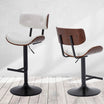
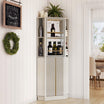

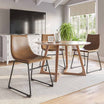

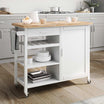
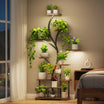


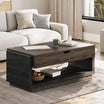









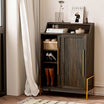
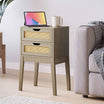




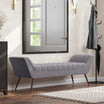
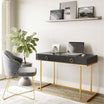

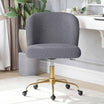

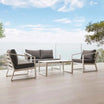
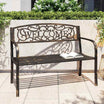


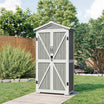
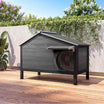




Leave a comment
This site is protected by hCaptcha and the hCaptcha Privacy Policy and Terms of Service apply.